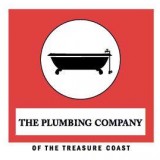Port St. Lucie, Florida is the primary city in St. Lucie County on Florida’s eastern coast. Thanks to rapid growth during the 2000s, Port St. Lucie’s population has expanded exponentially to 179,413 as of 2013 census estimates. Port St. Lucie forms a major portion of the Port St. Lucie, Florida Metropolitan Statistical Area that was estimated to have 438,095 residents in 2013. As of 2015, Port St. Lucie is the eighth most populous city Florida, having officially surpassed Fort Lauderdale.
As late as the 1950s, Port St. Lucie was little more than a mostly uninhabited piece of land south of White City. At the time, the settlement was comprised of just a secluded fishing camp, a few farms and businesses, and a section of U.S. Highway 1. In 1958, the General Development Corporation (GDC) bought the River Park development and 40,000 acres along the North Fork of the St. Lucie River, all for only $5. The very next year, the GDC opened its first bridge over the St. Lucie River, which at long last allowed for direct car access to Port St. Lucie.
By the end of February 1961, 250 new homes had sprung up across the city. GDC petitioned the state legislature to incorporate the River Park settlement and 70 additional miles of land into the official City of Port St. Lucie. The request was granted, although River Park residents chose not to incorporate their town into the formal city. With the passing of House Bill No. 953, Port St. Lucie became an incorporated city on April 27, 1961.
Three decades later in the early 1990s, Core Communities (CC) acquired and began planning a new suburb that would later become St. Lucie West. The original plan called for the 7-square-mile piece of St. Lucie West to gain 14,000 homes over the next 20 years, but CC quickly recognized the area’s prime location and began developing more than just residential neighborhoods. Business and entertainment sectors soon sprouted all over the area, bringing in 7,000 jobs and skyrocketing its population during much of the early 2000s.
In 2006, CC began developing the new community of Tradition, modeled after a classic 1950s town, out of what had previously been a simple cattle ranch. The company added nearly 13,000,000 square feet of brand new commercial area, as well as developments for over 18,000 private residences. According to CC, Tradition is the single largest fully entitled residential development area between Miami and the border with Canada. Tradition Square, the town center, holds year-round festivals and welcomes thousands of tourists every year. In fact, Tradition has become so popular that it was recently ranked one of the country’s top 100 communities.
In 2008, Port St. Lucie became home to the Florida Center of Innovation, a research lab and campus, which developed a new facility in Tradition. This facility conducts research for two biotech and life science companies, the Vaccine & Gene Therapy Institute and the Torrey Pines Institute for Molecular Studies, and is estimated to have added over 30,000 jobs to the Port St. Lucie area.
According to data from the U.S. Census Bureau, Port St. Lucie has a total area of 76.7 square miles, 75.5 square miles of which is land and a mere 1.2 square miles of which is water. As with much of Florida, the city features a warm humid subtropical climate, falling just shy of having an official tropical climate designation. Summer weather is hot, with daily highs typically reaching the low 90s. Winters are nearly always mild and warm, with average highs in the 70s even in January. The average yearly precipitation averages 53.5 inches.
Despite its tourist-welcoming weather, Port St. Lucie has fallen victim to several hurricanes in the recent past. The city was struck directly by a Category 2 Hurricane Frances in September 2004, and again by a Category 3 Hurricane Jeanne just a few weeks later. The very next year, a Category 3 Hurricane Wilma struck in October 2005. Thankfully, Port St. Lucie survived both these storms and others, and the city continues to thrive to this day.
Port St. Lucie is home to the St. Lucie County Public School System, a district that includes six elementary schools, seven K–8 schools, three high schools, and three post-secondary institutions. The city’s three public high schools are Port St. Lucie High School, St. Lucie West Centennial High School, and Treasure Coast High School, the latter of which is named for the discovery of sunken Spanish treasure off the region’s coast. The three higher education institutions within Port St. Lucie are Keiser University, Indian River State College, and Barry University.
Today, Port St. Lucie is popular among locals and visitors alike thanks to its low crime rate, abundant open space, natural beauty, and the friendly, optimistic vision of the city’s people. According to BizJournals.com, Port St. Lucie had the country’s highest homeownership rate in 2012, making it the only major market with an ownership rate over 75%. The city offers diverse economic opportunities as it continues to grow, and newcomers can look forward to modern infrastructure ready to support development and investment of all types. The five-person city council government is committed to delivering outstanding public services, making it a perfect home for people of all ages.
With so much great culture, it’s easy to see why Port St. Lucie has become the home of so many outstanding local businesses, including The Plumbing Company. If you need a plumber in Port St Lucie, call the experts at the The Plumbing Company at 772-223-8688. Their dedicated plumbers have the tools and expertise you need to get your pipes back in order in no time!
